Pia Addabbo
EM-based Algorithm for Unsupervised Clustering of Measurements from a Radar Sensor Network
May 04, 2024
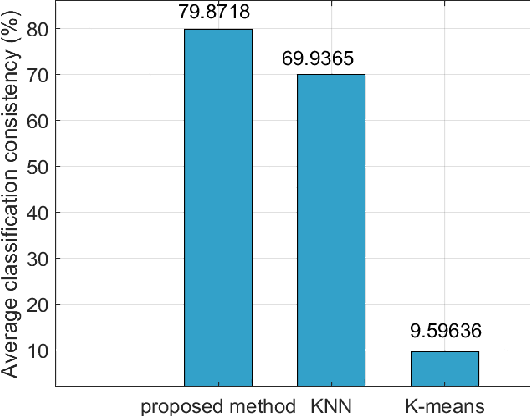
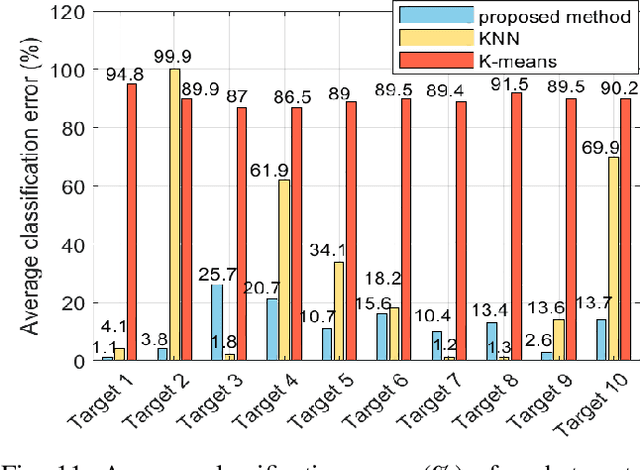

Abstract:This paper deals with the problem of clustering data returned by a radar sensor network that monitors a region where multiple moving targets are present. The network is formed by nodes with limited functionalities that transmit the estimates of target positions (after a detection) to a fusion center without any association between measurements and targets. To solve the problem at hand, we resort to model-based learning algorithms and instead of applying the plain maximum likelihood approach, due to the related computational requirements, we exploit the latent variable model coupled with the expectation-maximization algorithm. The devised estimation procedure returns posterior probabilities that are used to cluster the huge amount of data collected by the fusion center. Remarkably, we also consider challenging scenarios with an unknown number of targets and estimate it by means of the model order selection rules. The clustering performance of the proposed strategy is compared to that of conventional data-driven methods over synthetic data. The numerical examples point out that the herein proposed solutions can provide reliable clustering performance overcoming the considered competitors.
Multiple Sub-Pixel Target Detection for Hyperspectral Imaging Systems
Jan 16, 2023



Abstract:Hyperspectral target detection is a task of primary importance in remote sensing since it allows identification, location, and discrimination of target features. To this end, the reflectance maps, which contain the spectral signatures and related abundances of the materials in the observed scene, are often used. However, due to the low spatial resolution of most hyperspectral sensors, targets occupy a fraction of the pixel and, hence, the spectra of different sub-pixel targets (including the background spectrum) are mixed together within the same pixel. To solve this issue, in this paper, we adopt a generalized replacement model accounting for multiple sub-pixel target spectra and formulate the detection problem at hand as a binary hypothesis test where under the alternative hypothesis the target is modeled in terms of a linear combination of endmembers whose coefficients also account for the presence of the background. Then, we devise detection architectures based upon the generalized likelihood ratio test where the unknown parameters are suitably estimated through procedures inspired by the maximum likelihood approach. The performances of the proposed decision schemes are evaluated by means of both synthetic as well as real data and compared with an analogous counterpart by showing the effectiveness of the proposed procedure.
A Unified Theory of Adaptive Subspace Detection. Part II: Numerical Examples
May 11, 2022



Abstract:This paper is devoted to the performance analysis of the detectors proposed in the companion paper where a comprehensive design framework is presented for the adaptive detection of subspace signals. The framework addresses four variations on subspace detection: the subspace may be known or known only by its dimension; consecutive visits to the subspace may be unconstrained or they may be constrained by a prior probability distribution. In this paper, Monte Carlo simulations are used to compare the generalized likelihood ratio (GLR) detectors derived in [1] with estimate-and-plug (EP) approximations of the GLR detectors. Remarkably, the EP approximations appear here for the first time (at least to the best of the authors' knowledge). The numerical examples indicate that GLR detectors are effective for the detection of partially-known signals affected by inherent uncertainties due to the system or the operating environment. In particular, if the signal subspace is known, GLR detectors tend to outperform EP detectors. If, instead, the signal subspace is known only by its dimension, the performance of GLR and EP detectors is very similar.
Clutter Edges Detection Algorithms for Structured Clutter Covariance Matrices
Feb 03, 2022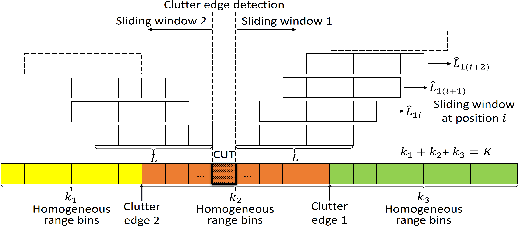
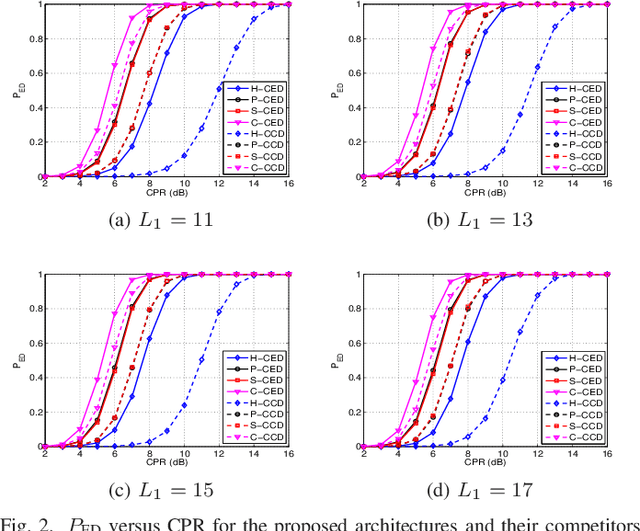


Abstract:This letter deals with the problem of clutter edge detection and localization in training data. To this end, the problem is formulated as a binary hypothesis test assuming that the ranks of the clutter covariance matrix are known, and adaptive architectures are designed based on the generalized likelihood ratio test to decide whether the training data within a sliding window contains a homogeneous set or two heterogeneous subsets. In the design stage, we utilize four different covariance matrix structures (i.e., Hermitian, persymmetric, symmetric, and centrosymmetric) to exploit the a priori information. Then, for the case of unknown ranks, the architectures are extended by devising a preliminary estimation stage resorting to the model order selection rules. Numerical examples based on both synthetic and real data highlight that the proposed solutions possess superior detection and localization performance with respect to the competitors that do not use any a priori information.
Unsupervised Sparse Unmixing of Atmospheric Trace Gases from Hyperspectral Satellite Data
Jan 14, 2022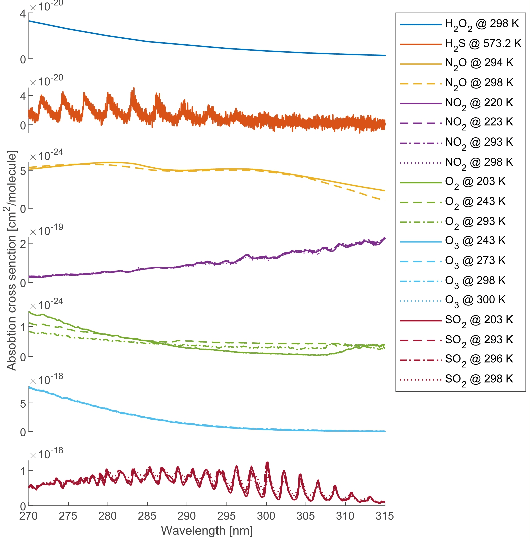

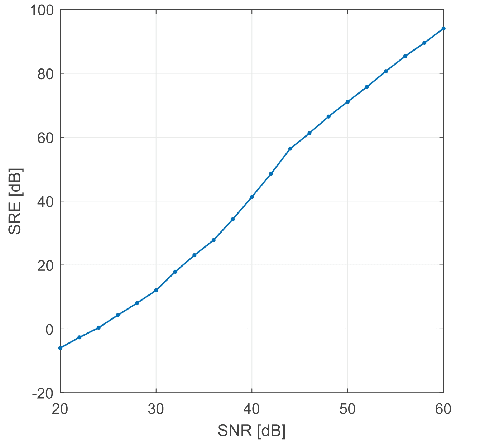

Abstract:In this letter, a new approach for the retrieval of the vertical column concentrations of trace gases from hyperspectral satellite observations, is proposed. The main idea is to perform a linear spectral unmixing by estimating the abundances of trace gases spectral signatures in each mixed pixel collected by an imaging spectrometer in the ultraviolet region. To this aim, the sparse nature of the measurements is brought to light and the compressive sensing paradigm is applied to estimate the concentrations of the gases' endemembers given by an a priori wide spectral library, including reference cross sections measured at different temperatures and pressures at the same time. The proposed approach has been experimentally assessed using both simulated and real hyperspectral dataset. Specifically, the experimental analysis relies on the retrieval of sulfur dioxide during volcanic emissions using data collected by the TROPOspheric Monitoring Instrument. To validate the procedure, we also compare the obtained results with the sulfur dioxide total column product based on the differential optical absorption spectroscopy technique and the retrieved concentrations estimated using the blind source separation.
EM-based Solutions for Covariance Structure Detection and Classification in Polarimetric SAR Images
Jun 21, 2021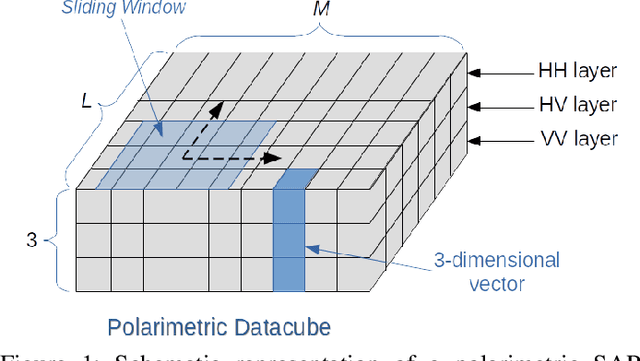

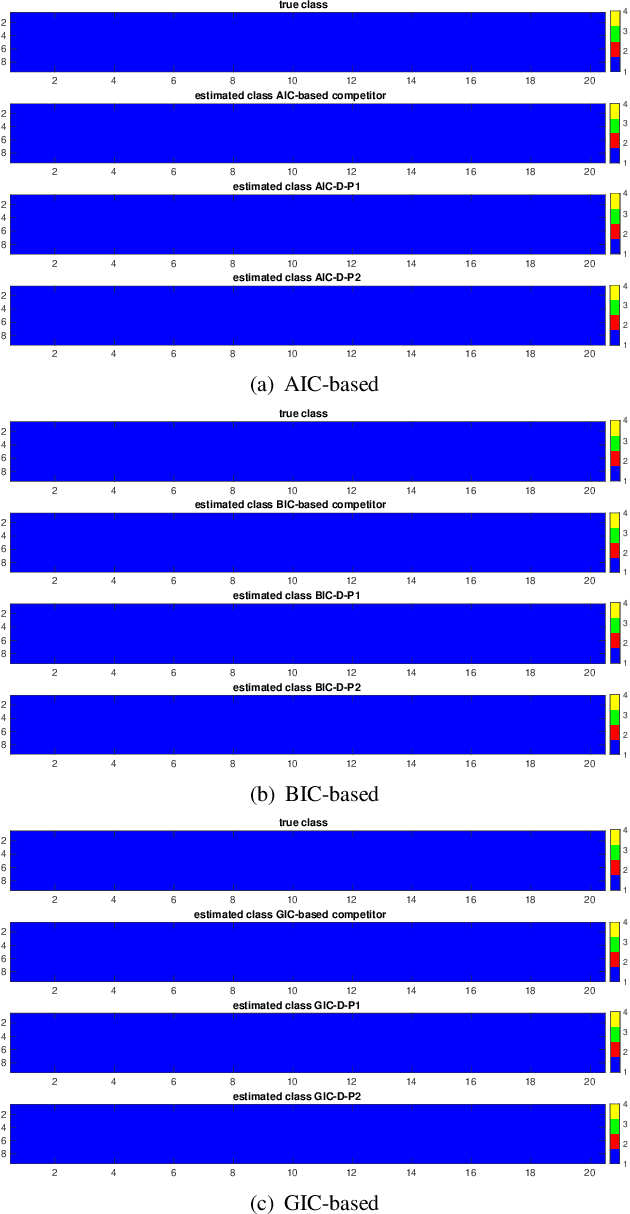
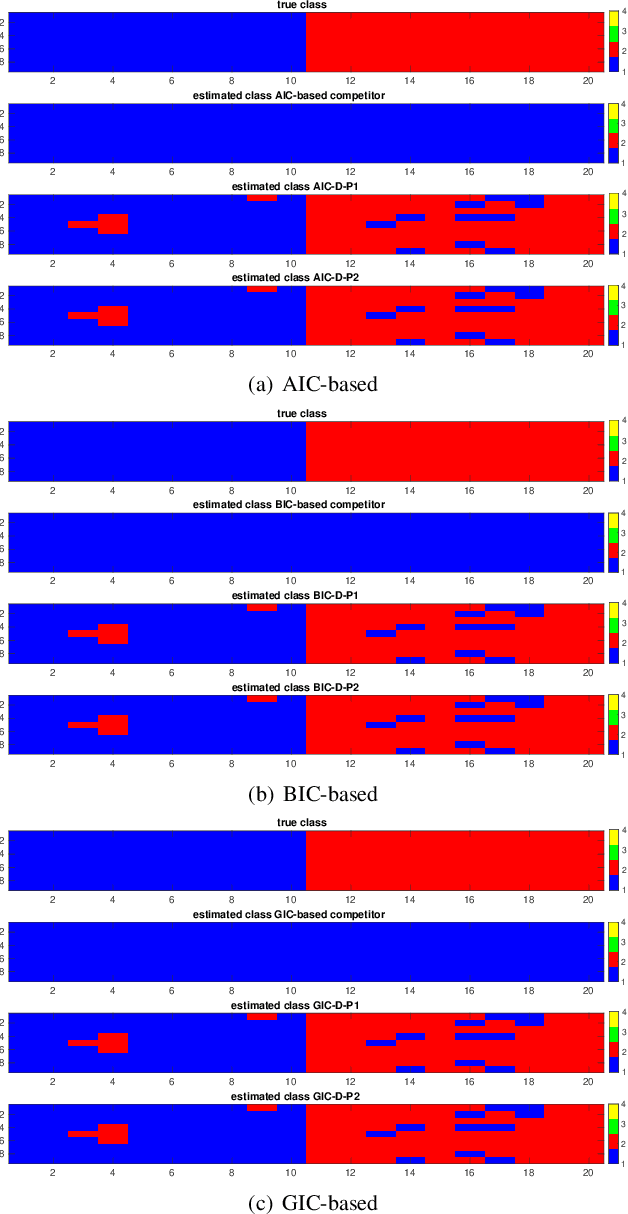
Abstract:This paper addresses the challenge of classifying polarimetric SAR images by leveraging the peculiar characteristics of the polarimetric covariance matrix (PCM). To this end, a general framework to solve a multiple hypothesis test is introduced with the aim to detect and classify contextual spatial variations in polarimetric SAR images. Specifically, under the null hypothesis, only an unknown structure is assumed for data belonging to a 2-dimensional spatial sliding window, whereas under each alternative hypothesis, data are partitioned into subsets sharing different structures. The problem of partition estimation is solved by resorting to hidden random variables representative of covariance structure classes and the expectation-maximization algorithm. The effectiveness of the proposed detection strategies is demonstrated on both simulated and real polarimetric SAR data also in comparison with existing classification algorithms.
Adaptive Detection of Dim Maneuvering Targets in Adjacent Range Cells
Mar 07, 2021
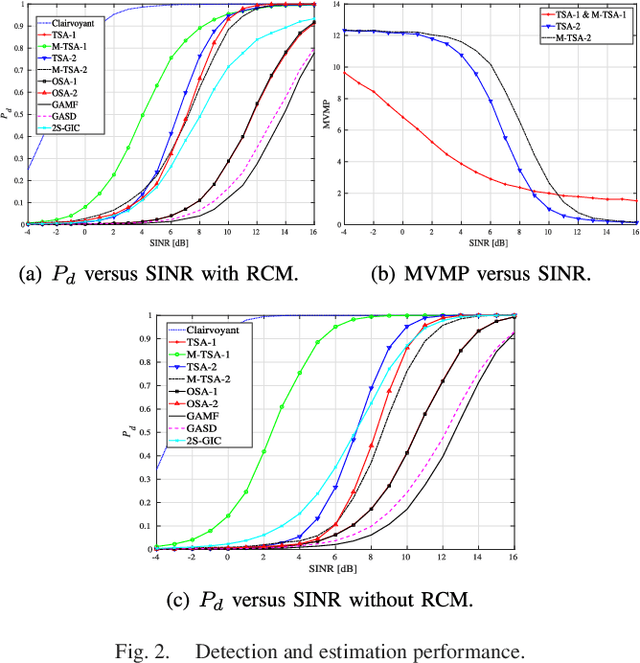
Abstract:This letter addresses the detection problem of dim maneuvering targets in the presence of range cell migration. Specifically, it is assumed that the moving target can appear in more than one range cell within the transmitted pulse train. Then, the Bayesian information criterion and the generalized likelihood ratio test design procedure are jointly exploited to come up with six adaptive decision schemes capable of estimating the range indices related to the target migration. The computational complexity of the proposed detectors is also studied and suitably reduced. Simulation results show the effectiveness of the newly proposed solutions also for a limited set of training data and in comparison with suitable counterparts.
Adaptive Radar Detection and Classification Algorithms for Multiple Coherent Signals
Dec 23, 2020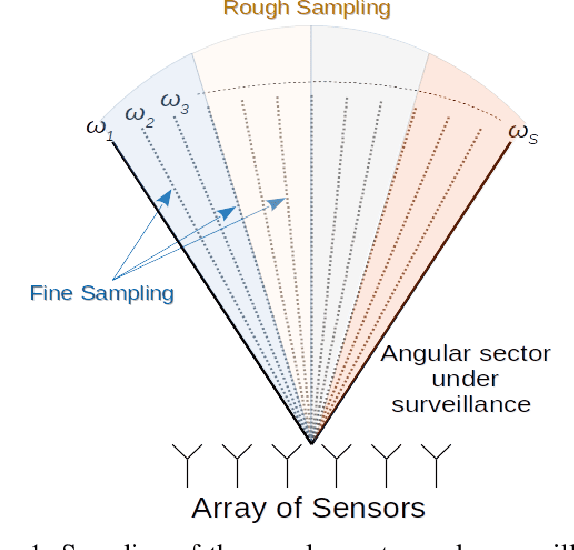
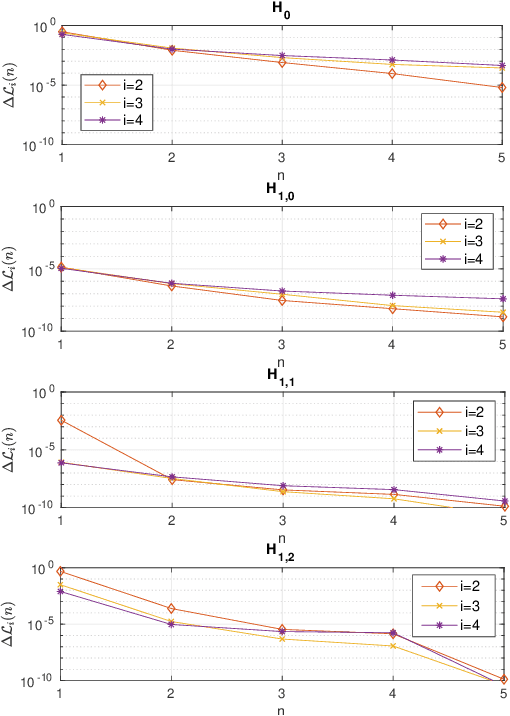
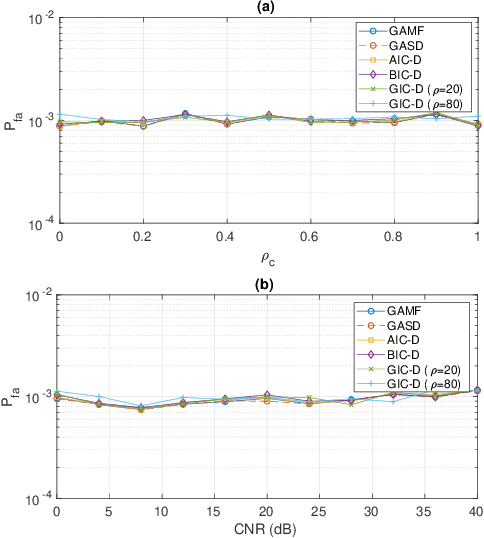
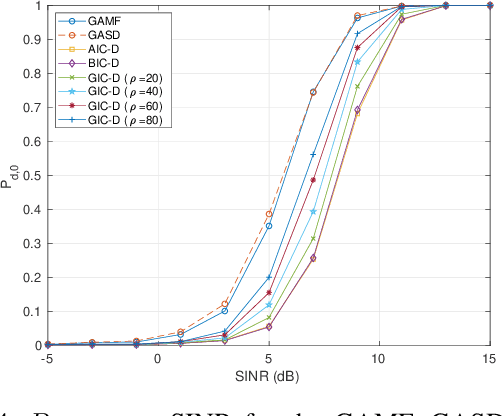
Abstract:In this paper, we address the problem of target detection in the presence of coherent (or fully correlated) signals, which can be due to multipath propagation effects or electronic attacks by smart jammers. To this end, we formulate the problem at hand as a multiple-hypothesis test that, besides the conventional radar alternative hypothesis, contains additional hypotheses accounting for the presence of an unknown number of interfering signals. In this context and leveraging the classification capabilities of the Model Order Selection rules, we devise penalized likelihood-ratio-based detection architectures that can establish, as a byproduct, which hypothesis is in force. Moreover, we propose a suboptimum procedure to estimate the angles of arrival of multiple coherent signals ensuring (at least for the considered parameters) almost the same performance as the exhaustive search. Finally, the performance assessment, conducted over simulated data and in comparison with conventional radar detectors, highlights that the proposed architectures can provide satisfactory performance in terms of probability of detection and correct classification.
 Add to Chrome
Add to Chrome Add to Firefox
Add to Firefox Add to Edge
Add to Edge